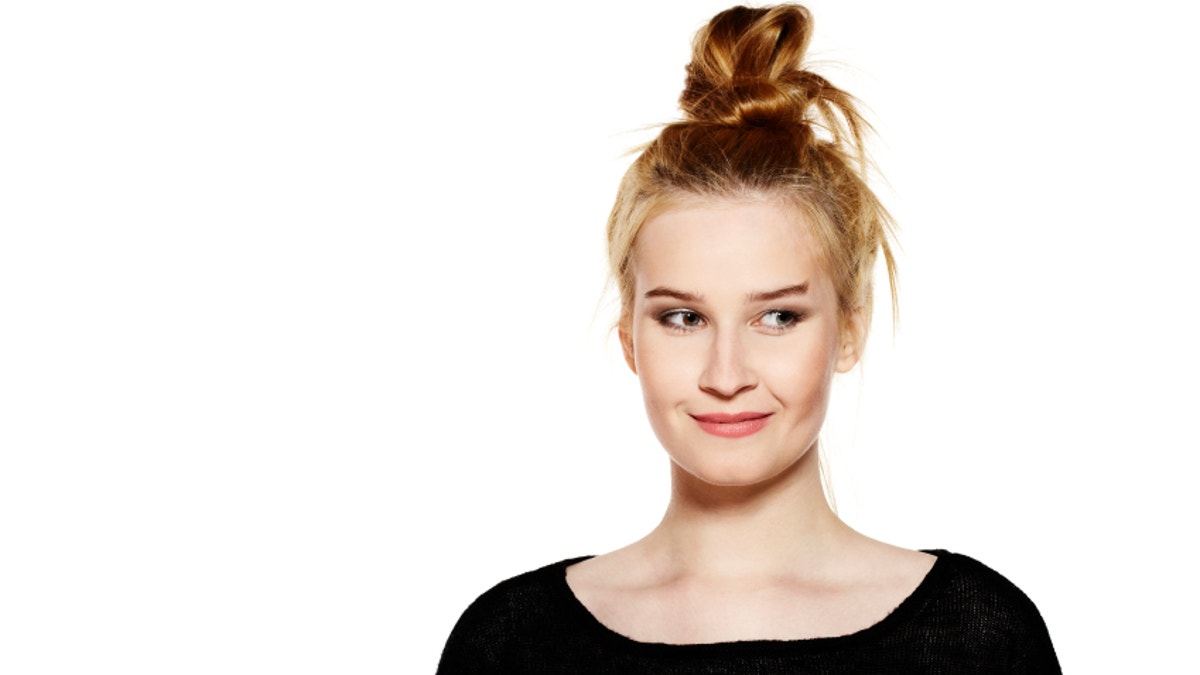
Portrait of attractive young woman isolated on white background. (Filip Warulik)
Recently the Internet whipped itself into a frenzy over reports about an uptick in “man bun”-related balding—But c’mon, really?
Well, it turns out that yes, really, sporting a “man bun”—or “woman bun” for that matter— just might lead to bald spots, if you wear a super-tight bun religiously, anyway.
The technical term for this kind of hair loss is traction alopecia, and it’s caused by consistent pulling on the hair’s roots that leads to damage.
RELATED: 10 Myths You Shouldn’t Believe About Hair Loss in Women
While the experts Health spoke with couldn’t vouch for a startling increase in traction alopecia among men, they did say that they’ve seen an uptick in cases among women.
“It used to be most common in women of color [who] wore their hair braided tight as children who would be confronted with hair loss in their thirties or forties,” explained New York-based dermatologist Dr. Doris Day.
And while super tight cornrows or braids continue to be a risk for hair loss later on, other popular hairstyles may also be adding to the problem.
RELATED: 15 Hair Products for a Shinier, Healthier Mane
First on the list: hair extensions, Day said.
“Women are aspiring to [have] more hair than is natural. They get addicted—it’s kind of like tanorexia in that sense,” she said, adding that this leads to women choosing to keep their extensions in far too long.
“Ballerinas and gymnasts [may also] experience traction alopecia, and wearing hair pulled back too tightly under a swim cap could cause this for swimmers, too,” added Anabel Kingsley, a trichologist at Phillips Kingsley Trichology Clinic in New York.
RELATED: 21 Reasons Why You’re Losing Your Hair
Anyone can fall victim to traction alopecia, especially if they have thinner tresses.
“Fine hair is weaker than coarser hair types, so anyone with finer strands are more likely to experience breakage,” Kingsley addsed.
To help prevent this, the best thing you can do is switch up your style often and wear buns, braids, and ponytails looser. “If your hair style is giving you a headache, it’s probably too tight,” Kingsley quipped.
